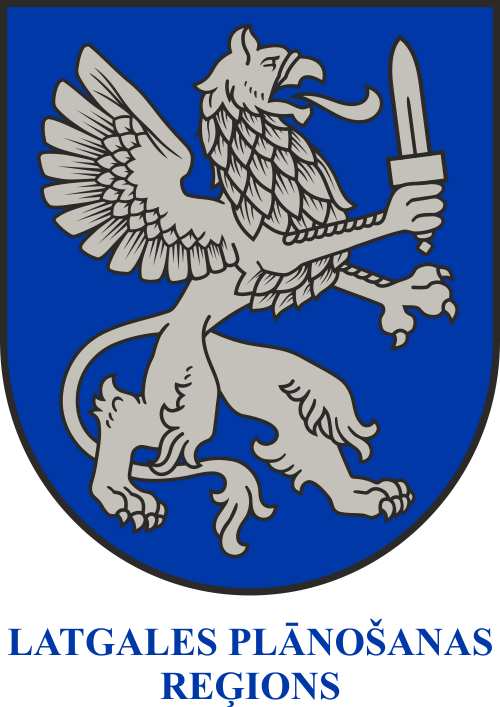
The industrial park of the Eastern Latvia Smart Technology and Research Center "ALTOP" will promote the economic growth of the Latgale region by creating a modern, world-class business space with advantageous logistics. It will offer smart specialization companies a modern energy-efficient A-class building with more than 11,000 m2 of leasable area, divided into 3 blocks, creating separate production areas (up to 150 employees) and administrative offices (up to 90 employees). Parking spaces are provided for each block near the building, including for people with mobility impairments and an electric charging station for light vehicles. It will also provide entrepreneurs with the opportunity to receive support from the Latgale SEZ and attract qualified labor.
GENERAL INFORMATION ABOUT THE OBJECT
Construction of industrial park at Lidostas iela 4, Lociki, Naujene parish, Augšdaugava district (cadastre designation of part of the land unit: 44740020029, area 231.77 ha);
The economic operator who will rent the building will be selected in an open, transparent and non-discriminatory way by holding an open, transparent public auction of rental rights.
BUILDING PARAMETERS
It is planned to build an energy-efficient production building divided into three blocks (1st phase, 2nd phase, 3rd phase) and to create the necessary infrastructure of the adjacent territory.
Entry to the territory is provided from Lidostas Street, on the West side of the land unit. Asphalt and cobblestone covering are used as covering materials near the building for the designed pedestrian sidewalks. Parking spaces are planned at the building for each warehouse block in its construction phase, incl. for people with mobility impairments and an electric charging parking space for light vehicles.
|
|
| The total area of the premises – 11,120.9 m²
Height from the ground to the ridge – 9.02 m (at the highest point)  |
ENGINEERING NETWORK SOLUTIONS
Water supply and sewerage (UK/UKT/LKT)
- Construction of water supply, sewerage networks;
- Construction of rainwater drainage;
- Water accounting for the building;
- Internal firefighting system;
- External firefighting system;
Ventilation (AVK-V)
- Construction a natural ventilation system;
- Construction of forced ventilation system;
- Construction of WC forced exhaust system with outlets through walls, covers, roof;
Thermomechanics (SM)
- Construction of a heating unit;
Heating (AVK-A)
- Construction of a heating system (a local boiler room will be built for each block and a water heating pellet boiler will be installed);
Electronic Communication Systems (ESS)
- Construction of IT networks (Wi-Fi coverage solution in the building);
- Construction of telecommunication networks;
- Security system;
Electric power supply (EL/ELT)
- Construction of electrical power grid;
- Accounting of energy resources (electricity);
- Construction of grounding and lightning protection networks;
Automatic Fire Alarm (UATS)
- Construction of automatic fire alarm system.
REQUIREMENTS FOR THE BUILDING LEASEHOLDER:
- the economic operator (leaseholder) operates in the field of smart specialization, industries with high added value (knowledge-intensive bioeconomy, biomedicine, medical technologies, pharmaceuticals, photonics and smart materials, technologies and engineering systems, smart energy and mobility, information and communication technologies);
- the economic operator works with innovations[1] or produces innovative or high added value products[2];
- the economic operator will create new jobs with an average wage that exceeds the average wage in the relevant sector of the economy no later than July 31, 2026;
- the economic operator will make non-financial investments in his own intangible investments and fixed assets no later than December 31, 2028;
- plans to start exporting goods and services within a three-year period after the construction of the infrastructure;
- the economic operator has developed good corporate governance in accordance with the definition of good corporate governance specified in the Corporate Governance Code (available at: Pašvaldības kodekss) (the concept of good corporate governance refers to the processes that contribute to the efficiency and long-term value growth of the economic operator or a set of measures for achieving the economic operator's operational goals and controlling the economic operator's activity, as well as assessing and managing risks related to the economic operator's activity, thus good corporate governance is the way any economic operator, regardless of its size, ownership structure, whether it is an economic operator owned by the state or private investors, can promote growth and ensure long-term success) and has available financial resources (it is possible to cover investments from one's own resources, or attract loans, etc.);
- plans to start the export of goods and services within a three-year period after the construction of the infrastructure, indicating the planned amount of export;
- plans investments in research and development, including improvement of employees' competences, within a three-year period after the construction of the infrastructure, indicating the planned amount of the investment. Improvement of competences is considered to be the improvement of professional knowledge, which is obtained through the implementation of research activities.
CONTACT INFORMATION:
Svetlana Krapivina
Deputy Head of the Development Department of the Central Administration of Daugavpils Municipality
Tel. 654 76067, +371 29819399
e-mail: svetlana.krapivina@daugavpils.lv
[1] Innovation is a successful implementation of scientific, technical, social, cultural or other field ideas, developments and technologies into a new product, service or process. An essential characteristic of an innovation is that it has been implemented. A product or service innovation is considered implemented only when it has entered the market. A process, marketing or organizational innovation is considered implemented only when it is practically implemented and used in the respective organization.
[2] Products with high added value are products whose production added value per employed person at a given time (year, hour) is higher than the average in the national economy, therefore total income and productivity are higher.


